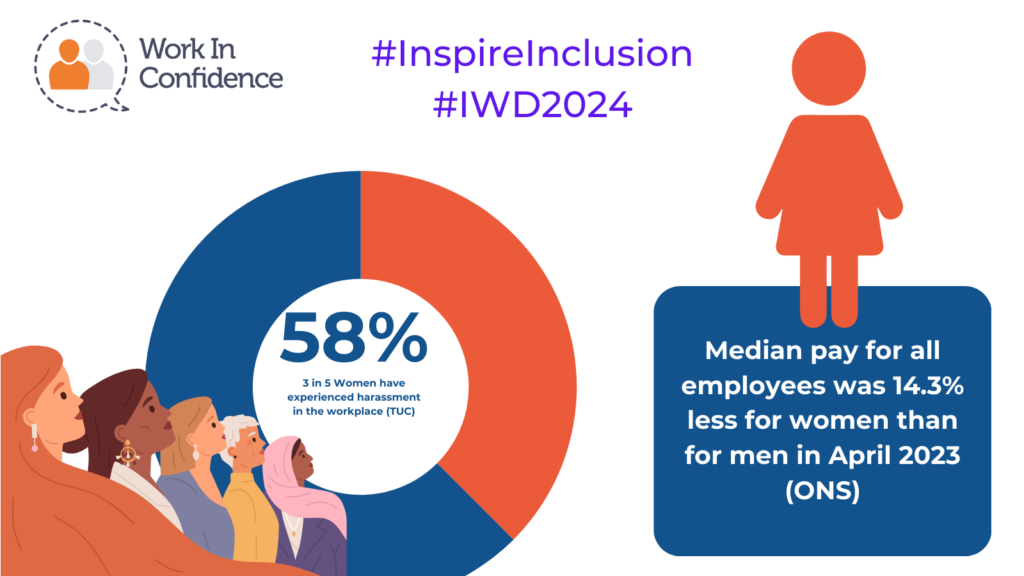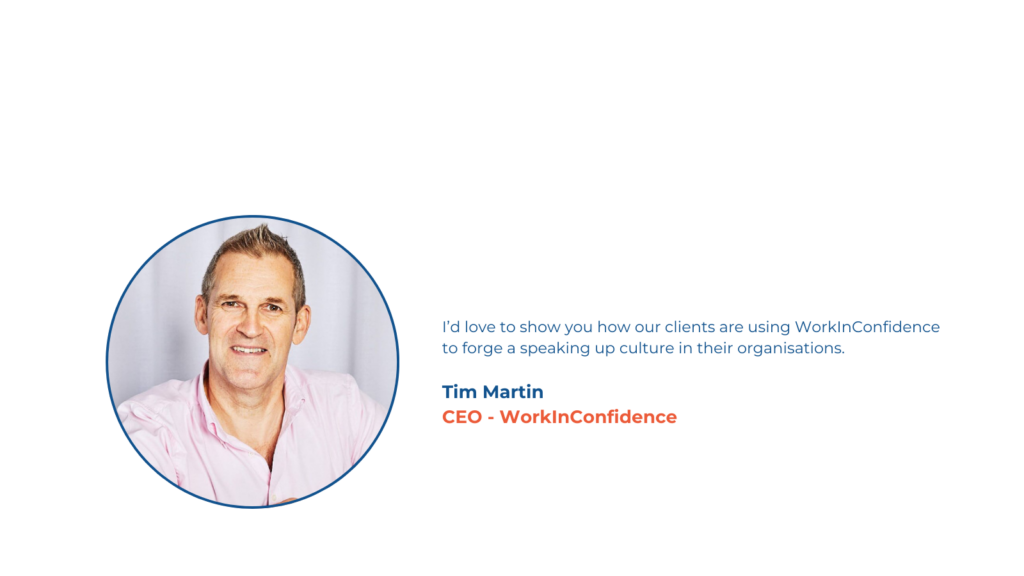
Inspire Inclusion
Imagine a gender equal world. A world free of bias, stereotypes, and discrimination. A world that’s diverse, equitable, and inclusive. A world where difference is valued and celebrated. Together we can forge women’s equality. Collectively we can all
Gender inequality
There is a persistent gender imbalance in the UK. Data shows that women make up just 38% of senior leadership, and face an enduring gender pay gap. Yet The Chartered Management Institute (CMI’s) found that only 1 in 5 senior managers and leaders actively advocate women for key projects, roles, and promotions.
Gender inequality and inequity in the workplace disproportionately impacts women, evident in various aspects such as unequal pay regardless of role, level, or industry, and the underrepresentation of women in senior positions as one ascends the corporate hierarchy. Double standards, holding individuals to different expectations or standards based on gender, i.e being more lenient towards men in leadership roles while being critical of assertiveness in women. These challenges are often exacerbated for women of colour, LGBTQ individuals, and those with disabilities, who face intersecting forms of discrimination.
Organisational structures often perpetuate gender-based discrimination, with leadership predominantly composed of one gender or having a higher concentration of employees belonging to a particular gender. This imbalance in representation contributes to an environment where sexism and sex discrimination persist, often unchecked due to power differentials and the normalisation of such behaviours.

Definition of sexism in the workplace
Sexism in the workplace refers to any form of discrimination, prejudice, stereotyping, or bias based on a person’s gender or sex. Microaggressions, often unintentional, subtle actions or comments (banter), which reinforce stereotypes or undermine individuals based on gender. Lack of representation at leadership level by not having adequate representation of women or other genders in leadership or decision-making roles. Sexual harassment, defined as unwanted or inappropriate behaviour of a sexual nature, including comments, advances, jokes, or actions which lead to uncomfortable or hostile work environments.
Sexism in the workplace creates an environment where individuals are not treated equally or fairly based on their gender. This leads to decreased morale, lower productivity, high staff turnover and an inbred gender inequality culture.
Addressing sexism in the workplace
Fostering equity, diversity and inclusion in today’s corporate landscape has become a focus for organisations stiving to create a thriving workplace culture.
However, despite advancements, sexism still persists in many workplaces, undermining the potential and well-being of employees. To combat this, pervasive issues, organisations must implement proactive strategies to address and eradicate sexism. Here are several key intiatives which can be put into place:
- Establish clear anti-sexism policies. Develop and communicate comprehensive policies which explicitly outline expected, acceptable behaviours. These policies should cover areas such as sexual harassment, gender discrimination, and unconscious bias, and provide clear procedures for reporting and addressing concerns.
- Provide ongoing education and training. Conducting regular training sessions on sexism, diversity, and unconscious bias is crucial for raising awareness and promoting understanding among employees and leadership. These sessions should be embedding your organisational values.
- Promote gender and diversity in leadership. Actively work towards achieving gender diversity in leadership positions by implementing recruitment and promotion practices which prioritise a gender balance and inclusivity.
- Encourage open dialogue and communication. Foster a culture of open communication where employees feel empowered to speak up about areas of concern around instances of sexism or gender-based discrimination without fear of retaliation. Establishing anonymous reporting channels and conducting regular employee surveyscan help gauge the effectiveness of organisational efforts and identify areas for improvement.
- Offer flexible work arrangements. Implement flexible work arrangements, such as remote work options, flexible hours, and parental leave policies which can all help to address gender inequalities by providing employees with greater work-life balance and opportunities to manage caregiving responsibilities.
- Lead by example. Leaders play a crucial role in setting the tone for workplace culture. Leaders should always demonstrate a commitment to diversity, equity, and inclusion through their actions, decisions and interactions with your people. This includes holding themselves accountable for upholding your anti-sexism policies.
- Regularly assess and adapt strategies. Continuously evaluate the effectiveness of initiatives aimed at addressing sexism in the workplace and be willing to adapt them based on feedback and evolving best practices. This could involve analysing retention and promotion data, diversity audits and acquiring feedback from employees.
- Invest in support resources. Provide access to support resources such as employee assistance programs, counselling services, and affinity groups for individuals who have experienced sexism or gender-based discrimination. Creating a supporting and inclusive environment is essential for fostering employee wellbeing and retention.
Reporting sexism in the workplace with WorkInConfidence
Employee engagement surveys and anonymous reporting systems are valuable tools which organisations can leverage to create a more equal culture by promoting transparency, accountability, and continuous improvement.
By leveraging employee engagement surveys and anonymous reporting systems in tandem, organisations can gain valuable insights into the state of equality within the workplace, empower employees to contribute to positive change, and demonstrate a commitment to fostering a culture where all individuals are treated with dignity, respect, and fairness.

Elevate your workplace culture with our most popular engagement tools - Free to download
How to end sexual harassment in the workplace
Create a safer, more inclusive work environment for yourself and your colleagues
The Definitive Guide to Workplace Bullying
Download the guide and learn how to create a zero tolerance workplace culture and give people a voice
Building a Successful Speak Up Culture in your organisation
Download our free e-book and start improving your organisational health
The Concise Guide to Engaging and Retaining Employees
Download our free e-book to find out how to engage and retain your top talent





